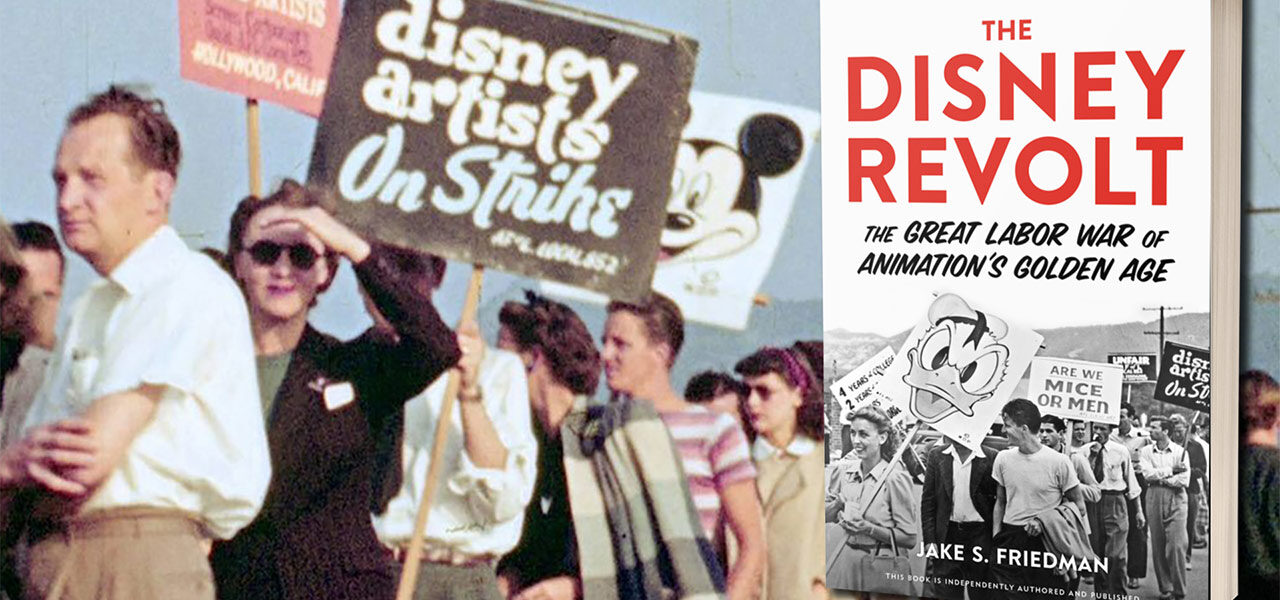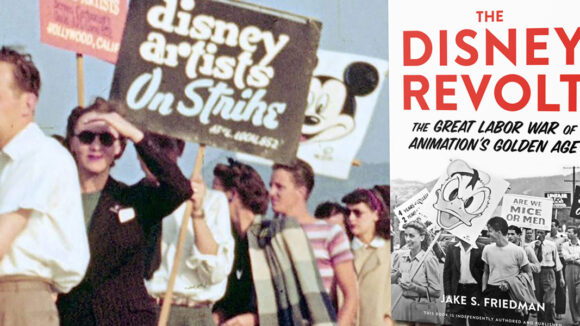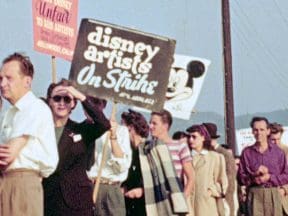

In ‘The Disney Revolt,’ Jake Friedman Reveals How Walt Disney’s Animators Rebelled Against The Studio (Video Interview)
When Disney’s animation studio went on strike and subsequently unionized in 1941, it was NOT the first American studio to do so. But it was the most important.
Then, as now, Disney was the 800-pound gorilla of American animation and its every business move reverberated with outsized weight throughout the entire industry.
Jake S. Friedman’s new book The Disney Revolt: The Great Labor War of Animation’s Golden Age (Chicago Review Press, 2022) tells the story of the Disney strike in greater detail than ever before. The events are set against a lively and dramatic milieu where the art of character-based performance animation was still being developed, a visionary boss was unceasing in his quest for excellence, workers’ unions were controlled by mobsters, and the stakes were the future of an entire nascent industry.
Deeply researched and well balanced in its depiction of the worker and management sides, Friedman sketches out the main players and scenes with colorful detail that brings the reader close-up to one of the most significant events in animation history.
The publication of the book could not be more timely. In recent years, a resurgent worker’s movement has been picking up steam in the animation industry. From voice actors at Crunchyroll to video game workers at Activision to the Animation Guild expanding its mission to represent production workers and New York artists, the current labor movement in animation is stronger than it has been in decades.
In a conversation with Cartoon Brew’s editor at large Amid Amidi, Friedman discusses what caused the discontent at Disney, why animator Art Babbitt became such a central (and divisive) figure in the strike, the accusations against the artists that they were communists, the accusations against Disney that he was anti-Semitic, and the surprising role that Warner Bros. animators played in the strike.

.png)
